One to One Functions - Graph, Examples | Horizontal Line Test
What is a One to One Function?
A one-to-one function is a mathematical function whereby each input corresponds to a single output. That is to say, for each x, there is only one y and vice versa. This signifies that the graph of a one-to-one function will never intersect.
The input value in a one-to-one function is known as the domain of the function, and the output value is noted as the range of the function.
Let's examine the pictures below:
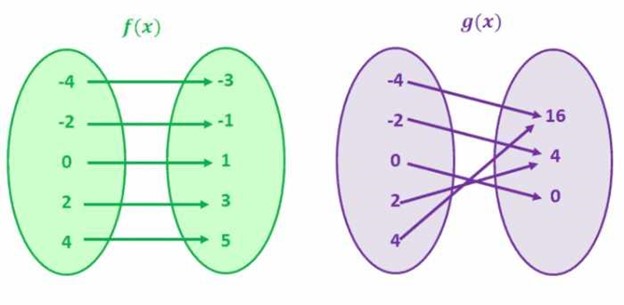
For f(x), every value in the left circle correlates to a unique value in the right circle. Similarly, every value on the right corresponds to a unique value on the left side. In mathematical jargon, this implies every domain has a unique range, and every range holds a unique domain. Therefore, this is a representation of a one-to-one function.
Here are some more examples of one-to-one functions:
-
f(x) = x + 1
-
f(x) = 2x
Now let's study the second picture, which shows the values for g(x).
Notice that the inputs in the left circle (domain) do not own unique outputs in the right circle (range). For instance, the inputs -2 and 2 have the same output, i.e., 4. In conjunction, the inputs -4 and 4 have the same output, i.e., 16. We can comprehend that there are matching Y values for numerous X values. Therefore, this is not a one-to-one function.
Here are some other examples of non one-to-one functions:
-
f(x) = x^2
-
f(x)=(x+2)^2
What are the characteristics of One to One Functions?
One-to-one functions have the following qualities:
-
The function holds an inverse.
-
The graph of the function is a line that does not intersect itself.
-
They pass the horizontal line test.
-
The graph of a function and its inverse are the same with respect to the line y = x.
How to Graph a One to One Function
In order to graph a one-to-one function, you are required to figure out the domain and range for the function. Let's study an easy example of a function f(x) = x + 1.
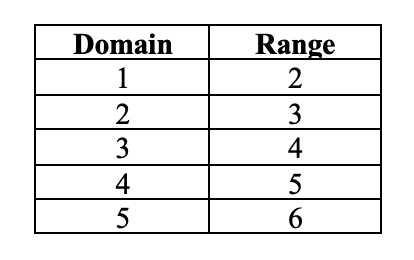
As soon as you have the domain and the range for the function, you ought to chart the domain values on the X-axis and range values on the Y-axis.
How can you tell whether or not a Function is One to One?
To test whether or not a function is one-to-one, we can use the horizontal line test. Once you chart the graph of a function, trace horizontal lines over the graph. If a horizontal line intersects the graph of the function at more than one spot, then the function is not one-to-one.
Because the graph of every linear function is a straight line, and a horizontal line does not intersect the graph at more than one spot, we can also reason that all linear functions are one-to-one functions. Keep in mind that we do not use the vertical line test for one-to-one functions.
Let's examine the graph for f(x) = x + 1. Once you chart the values of x-coordinates and y-coordinates, you have to examine whether or not a horizontal line intersects the graph at more than one point. In this case, the graph does not intersect any horizontal line more than once. This indicates that the function is a one-to-one function.
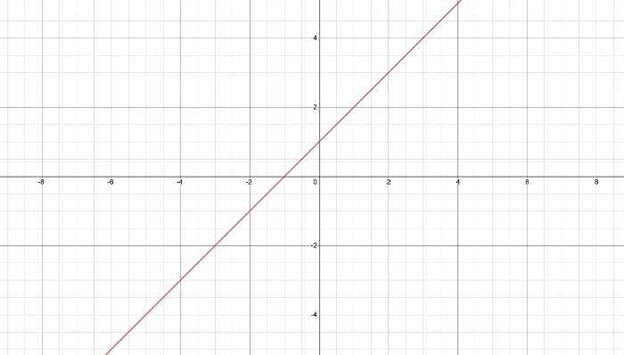
On the other hand, if the function is not a one-to-one function, it will intersect the same horizontal line multiple times. Let's examine the diagram for the f(y) = y^2. Here are the domain and the range values for the function:
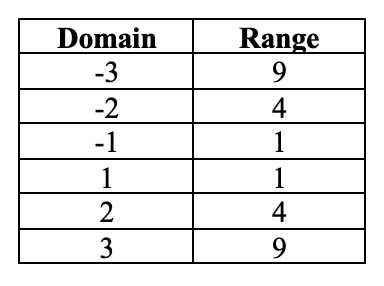
Here is the graph for the function:
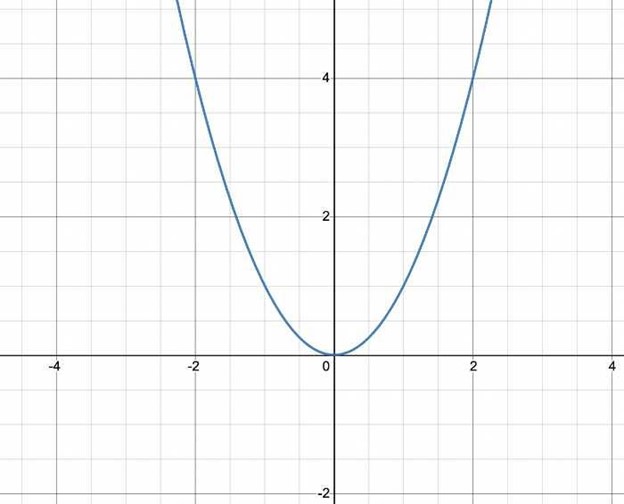
In this example, the graph crosses various horizontal lines. Case in point, for each domains -1 and 1, the range is 1. Additionally, for both -2 and 2, the range is 4. This means that f(x) = x^2 is not a one-to-one function.
What is the inverse of a One-to-One Function?
Considering the fact that a one-to-one function has only one input value for each output value, the inverse of a one-to-one function is also a one-to-one function. The opposite of the function basically undoes the function.
For example, in the case of f(x) = x + 1, we add 1 to each value of x in order to get the output, in other words, y. The inverse of this function will remove 1 from each value of y.
The inverse of the function is denoted as f−1.
What are the properties of the inverse of a One to One Function?
The qualities of an inverse one-to-one function are the same as every other one-to-one functions. This signifies that the inverse of a one-to-one function will have one domain for every range and pass the horizontal line test.
How do you figure out the inverse of a One-to-One Function?
Figuring out the inverse of a function is simple. You simply have to switch the x and y values. Case in point, the inverse of the function f(x) = x + 5 is f-1(x) = x - 5.
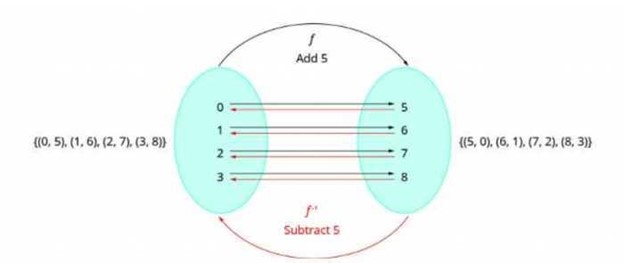
Just like we reviewed previously, the inverse of a one-to-one function reverses the function. Since the original output value showed us we needed to add 5 to each input value, the new output value will require us to deduct 5 from each input value.
One to One Function Practice Examples
Consider these functions:
-
f(x) = x + 1
-
f(x) = 2x
-
f(x) = x2
-
f(x) = 3x - 2
-
f(x) = |x|
-
g(x) = 2x + 1
-
h(x) = x/2 - 1
-
j(x) = √x
-
k(x) = (x + 2)/(x - 2)
-
l(x) = 3√x
-
m(x) = 5 - x
For any of these functions:
1. Determine whether the function is one-to-one.
2. Graph the function and its inverse.
3. Find the inverse of the function mathematically.
4. Specify the domain and range of every function and its inverse.
5. Employ the inverse to determine the value for x in each calculation.
Grade Potential Can Help You Learn You Functions
If you are struggling trying to learn one-to-one functions or similar topics, Grade Potential can connect you with a private teacher who can assist you. Our Phoenix math tutors are skilled educators who help students just like you enhance their understanding of these subjects.
With Grade Potential, you can learn at your own pace from the comfort of your own home. Plan a call with Grade Potential today by calling (602) 704-5688 to find out more about our tutoring services. One of our consultants will call you to better inquire about your requirements to set you up with the best tutor for you!




